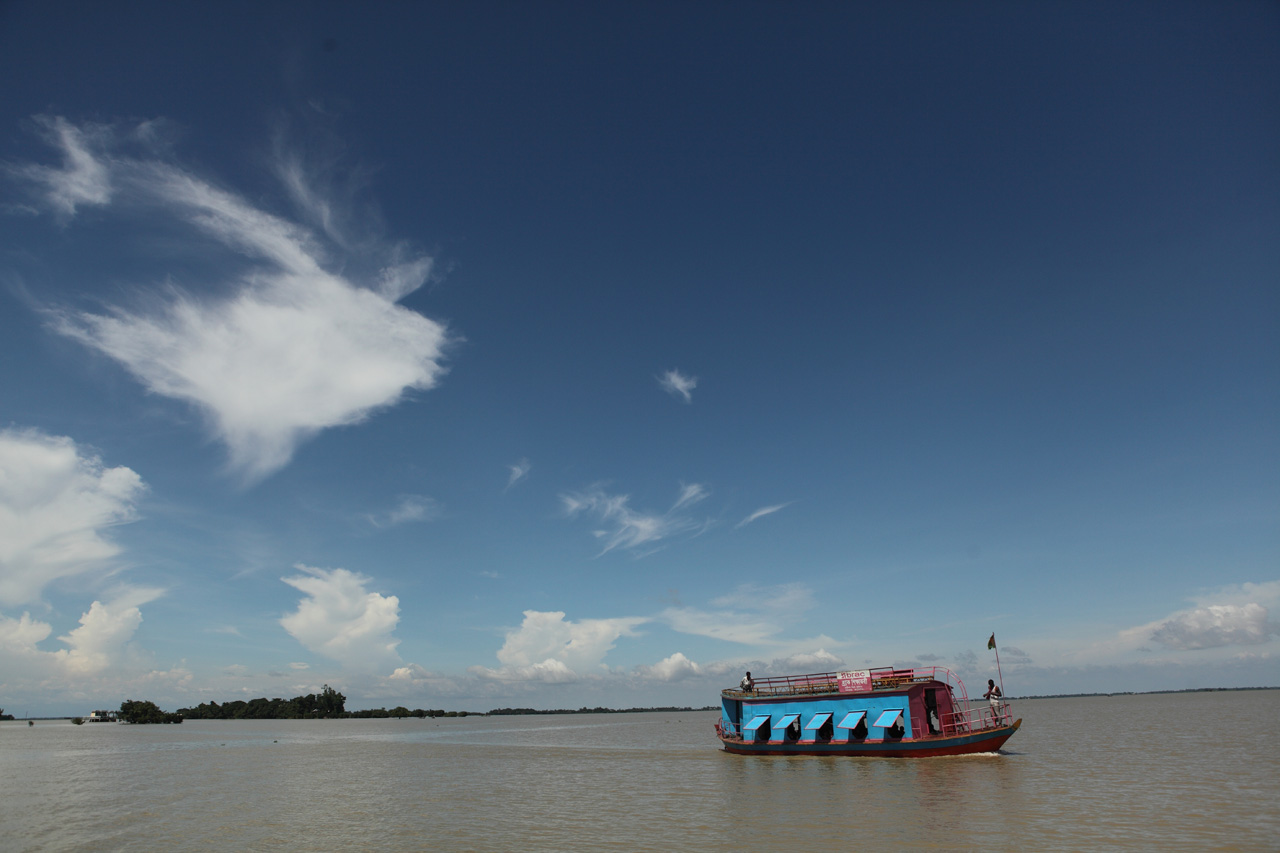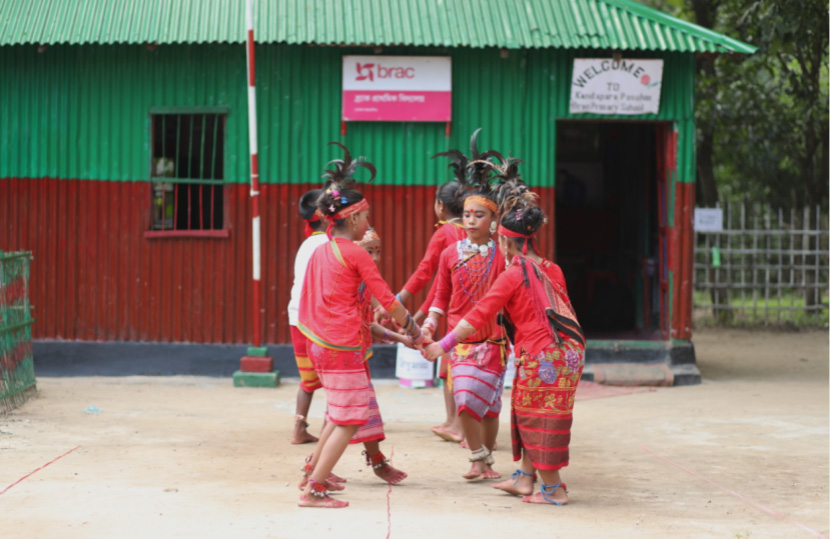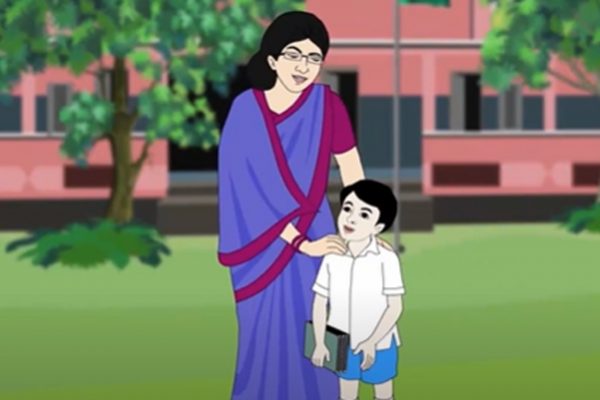Agents of change: Three primary schools in Bangladesh being watched by the world
Reading Time: 5 minutes
As vaccinations are distributed globally and schools closed for months start planning to open, questions are being raised about what changes we need to our education system in a post-pandemic world. We have a unique chance to shape our curriculum and teaching and learning methods now for when we reopen, and climate change, diversity and gender equality are challenges that should be high on that priority list. Three schools in Bangladesh were globally recognised for their work in these areas in 2019; this blog takes a closer look at them.
In 2019, the global organisation T4 chose 100 schools which exemplify best practices in education. Three schools in Bangladesh were selected: Vati Jamalgor, Kandapara Pashchim, and Sauderosi BRAC Primary schools.
This is no small feat for a country with a literacy rate of 18% in 1971.
Bangladesh is one of the world’s largest deltas, home to hundreds of rivers. 80% of its total land area (147,540 square kilometres) is made up of floodplains. These water bodies supply food and income, but make things difficult in terms of accessibility. This, combined with low elevation, high population density and increasing wealth inequality, present significant challenges to getting children to school.
Read more: Floating schools for climate change
BRAC started its work with education in Bangladesh. Its schools have now been running for over 50 years, have expanded to four other countries and have graduated over 12 million students to date. BRAC also provides support to government and NGO-run schools in each country.
Vati Jamalgor, Kandapara Pashchim, and Sauderosi BRAC primary schools are located on opposite sides of Bangladesh and it is very likely that the teachers and students of these schools have never crossed paths with each other. However, they all run using the same model, focusing on innovation, inclusion, integrity and effectiveness. All BRAC schools use a human-centred design approach to contextualise each school according to the community it is built in. T4 selected them for their best-practice models for tackling climate change, diversity and gender equality, respectively.
Vati Jamalgor, BRAC Primary Boat School: Climate change

“We want Bangladesh to have a future generation of Greta Thunbergs where children start to take leadership roles and are at the forefront of change” – Dr Safiqul Islam, Director of BRAC Education Programme.
Two-thirds of Bangladesh is less than five metres above sea level, and half the country goes underwater every year. The country is considered as the ground zero of climate change, having already been living with it for more than a decade. Bangladesh is the seventh most vulnerable country to extreme weather conditions according to the Global Climate Risk Index 2020, and it has been estimated that one in seven Bangladeshis will be displaced due to climate change by 2050.
Vati Jamalgor BRAC Primary school is one of 600 floating schools plying Bangladesh’s rivers, bringing education to children living in wetland areas who would otherwise not be able to attend school for half the year. The floating schools act as classrooms and school buses. They pick up students, teach them and then drop them back to their homes after class is finished. 150,000 children have been reached by the floating schools to date.
Not only have these schools adapted to provide education in a world increasingly affected by flooding, but they also contribute to mitigation efforts;
“BRAC is adopting a no-plastic policy and this is one of the several climate-resilient habits that the boat schools have adopted. The students of this school are aware of recycling, reduction, and reuse. The schools also incorporate environmental education materials in the regional curriculum to make the students ready for combatting the consequences of climate change and transforming their lives toward a sustainable future”. – Dr Mahbuba Nasrin, Institute of Disaster Management and Vulnerability Studies.
Read more: The secret of a smart child: Plenty of playtime
As we struggle with adaptation and mitigation of climate change globally, BRAC’s floating schools offer a model for the world for both of these challenges in the education space.
Kandapara Poshchim, BRAC Primary School: Language

Bangladesh is the culmination of many cultures scattered across the map. Two million people from 57 ethnic communities live in Bangladesh. 37 of the 39 languages are spoken by indigenous communities.
With communities this diverse, challenges are varied.
People from indigenous communities live in hilly terrains and remote villages on plain lands, which are often hard-to-reach and disaster-prone areas. High levels of poverty, low literacy rates, and weak communication routes are coupled with high dropout rates, as children have to prioritise supporting their families over learning.
For the students who do attend schools, the lessons are often not taught in their native languages.
In 2001, BRAC realised the need to create schools which celebrate diversity, where children learn in their mother tongues, and languages spoken by ethnic communities are promoted. Kandapara Poshchim Primary School is one of these diverse schools.
Read more: Why learning should begin in your own language
The teacher is from the indigenous community, and speaks both in Bangla and their native language. The curriculum is designed in their mother tongue. This helps students understand the coursework more clearly and gets them enthusiastic about school.
The school is located in a rural and remote environment of Northern Bangladesh, adjacent to the Indian border. Most students of the school are from low-income families from indigenous communities.
Kandapara Poshchim Primary School follows a one-teacher, one-classroom modality for non-formal primary education. The class operates in a low-resource setting – the school is made of low cost and environment-friendly material. The school is a mixed co-education with a majority of indigenous and girl students.
To date, BRAC has reached 250,000 students across 56 ethnic communities, each with their own culture and distinct language.
Sauderosi, BRAC Primary School: Girls

Half of Bangladesh’s primary school students are girls. However, two out of 10 girls enrolled in school drop out. In any crisis, girls are the worst affected, and their education is the least prioritised. These adversities are more prevalent in remote areas.
Sulla is a hard-to-reach and disaster-prone region in north-eastern Bangladesh. Due to its geographical location, the region faces communication barricades, social exclusion and high rates of poverty. Average literacy rate in the area is 21.8%.
Read more: World’s Indigenous Peoples Day: Celebrating diversity through stories
For girl students living in Sulla, the distance between schools and their homes, less-than-favourable class arrangements, and lack of quality education are some of the reasons why they drop out.
So we asked: how can we make schools more accessible, safe and accommodating for girls? The Sauderosi Primary School was established in 2018 to tackle some of these challenges.
The school’s foundations have been built through active engagement with the community; class schedules and the location of the school were decided by having extensive discussions with parents of students living in Sulla.
Misconceptions and sensitive issues about girls’ education are resolved through monthly parent-teacher meetings, which also help in instilling the value of schooling for girls. This opportunity is used to create awareness among the families regarding issues on child marriage and domestic violence. Since the teachers are from the same community as the students, a relationship of trust exists.
Fifty percent of the students in Sauderosi are girls. They learn about physical wellbeing, as well as physical abuse, and are led by a female teacher chosen by the community. Three of the four student group leaders are always girls, and this is only one of the ways girls are taught to have more self efficacy in Sauderosi.
Schools like these are champions of inclusive teaching and learning. Some organisations, like T4, are trying to make sure these best practices are replicated all over the globe to create a world free of illiteracy and poverty. Vati Jamalgor, Kandapara Poshchim, and Sauderosi primary schools were featured on World Education Week to showcase to a global audience of academia on how they manage to tackle various obstacles that prevent quality education from reaching children.
As the world starts recovering from the COVID-19 pandemic, it must take into account the very real effects the closing of schools has had on the lives of students. Being adaptive to climate change, addressing diversity and gender equality are crucial to build back a better, more resilient and equitable education system, and ensure that children have the best opportunities to reach their full potential.
Rubab Al Islam is a communications specialist at BRAC Communications.





